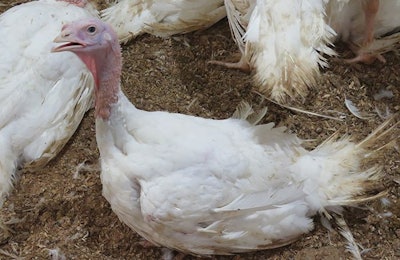
Sluggish prices are keeping turkey producers cautious in 2019 and beyond.
Short supply, margin improvement
In response to an extended stretch of poor margins, turkey producers reduced output in 2014. The availability of turkey meat fell to its lowest level since 1988. The following year, close to 8 million turkeys were lost in the outbreak of highly pathogenic avian influenza.
Prices rose sharply, culminating with frozen 8 to 16 pound hens posting an all-time high on an average annual basis of $1.17 per pound in 2016, according to U.S. Department of Agriculture (USDA) data. Tom breast meat prices also increased sharply, reaching an all-time high of nearly $6 per pound in 2015.
Feed input costs decreased through this stretch, which helped facilitate a drastic turnaround in turkey industry margins. U.S. turkey producers went from losing more than 20 cents per pound (on a ready-to-cook basis) to enjoying net returns of more than 50 cents per pound for an extended stretch in 2015 and 2016.

Whole turkey prices recovered modestly despite turkey supplies approaching a three-decade low in 2019.
Supply rebounds briefly
Soaring profit margins incentivized a fast response. Domestic per capita availability of turkey in 2016 reached its highest point since 2010. Turkey breast prices were pressured sharply lower, however, due to buyers substituting with other meat products to avoid high prices.
As breast meat prices collapsed further in 2017, whole turkeys followed and continued lower into 2018. Frozen 8 to 16 pound hens averaged just 80 cents per pound last year according to USDA data.
Declining prices and narrowing profit margins led to renewed supply reductions. Domestic per capita supplies in 2019 are coming close to matching 2014 as the smallest in 30 years.
Slow recovery signals weak demand
Whole turkey prices falling the past couple of years even as supplies have tightened implies that demand is considerably weaker.
This process started with buyers trying to escape record high prices for turkey but it’s continued as competing meat protein sources became increasingly abundant and relatively inexpensive. It’s a struggle the turkey industry still faces today.
That said, this year featured a glimmer of hope with frozen whole turkey prices rebounding approximately 10% from 2018 levels. Sluggish demand aside, turkey producers are finally yielding benefits from supply reductions.
Nevertheless, look for producers to remain cautious in 2020 and try to keep supplies low until evidence emerges turkey demand is on much better footing.

















